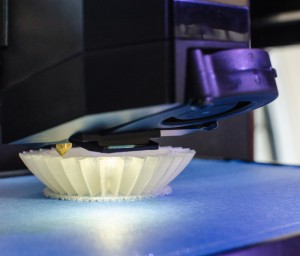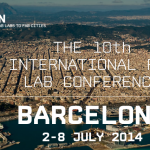Last week we talked about the emerging technology of Augmented Reality; the technology of this week is 3D printing. Looking at potential, 3D printing is expected to be much more promising with a market up to $550M – $650M per year in ten years time (McKinsey / Gartner). The fields of application are enormous: fashion, manufacturing, toys, medical, architecture, food, retail, automotive … (an inexhaustible list). From an innovation point of view, it is very interesting because it might completely disrupt a whole market segment. Therefore, 3D printing is often referred to as manufacturing of the future.
The 3D printing landscape
So what is 3D printing? It is a process of making a physical object from a three-dimensional (3D) digital model. 3D printing can be used to model a concept, functional prototyping, manufacturing tools, produce end user parts/ goods or for finishing (sealing, polishing, decorating). The benefits are producing at the time of need (real-time demand), high level of customization through freedom in creative design and it is an example of efficient zero waste production. The list of possible materials for 3D printing is growing by the month, but is already as diverse as metal, chocolate and stem cells. The main market players are3D Systems Inc., Stratasys, Dassault Systemes and iMaterialise. As software, CAD AutoDesk and Google SketchUp are very popular.
The rise of the Prosumer
Talking about traditional manufacturing, we think of big factories producing in large bulks for a global network. With 3D printing it will be possible to produce much more local and based on real-time demand (hence, assuring also a more sustainable production through less transport). Furthermore, 3D printing enables the integration of design, production and consumption. Nowadays, these are considered different steps, but we do see a rise of the Prosumers. The first step will be the integration of production and consumption; therefore Prosumers. The “Maker” and Do It Yourself (DIY) communities are growing exponentially. According to 3Dprinting industry, Barcelona is at the heart of the 3D of this revolution, hosting communities, hubs and conferences. Worth mentioning as well is the fact that in April this year, HP decided to locate its world centre to develop 3D printing business in its facilities at Sant Cugat del Vallès, in Greater Barcelona.
To start experimenting with being a Prosumer or support other Prosumers, upload or use designs from platforms as Thingiverse and Shapeways. See how dreams and extraordinary imagination come to reality; varying from real art pieces to practical and functional tools. When you found a design you like, you could bring it to one of the many 3D hubs in the city.
The future is here
Close to home, here in Barcelona, this technology is used to in the highest value: to save a human life. In the beginning of July, the Sant Joan de Déu Hospital successfully removed a tumor from a five year old child by first preparing and practicing the “highly complex” procedure on a 3D printed tumor. A beautiful example of what is already possible with this technology. And there are many more fascinating examples from the life sciences industry, like printing organs, vessels and bone structures.
Also in our daily life, 3D printing will change customs and habits. For example, Barcelona startup Natural Machines, works hard to bring the 3D printer as a luxurious kitchen appliance in our home to prepare all kind of food in a nicely designed manner. For winter 2014, they are working on a concept to have fully 3D printed meals served by robots in Barcelona and New York. Thus, also the food sector is reimagined.
Lastly, Barcelona has various meet-ups active in sharing practices and knowledge to enhance the 3d revolution. Two known ones are MOB// Makers of Barcelona (845 members) and 3D Printing Barcelona (475 members).
Slideshare
To give you an overview of the potential of 3D printing, check the slideshare presentation.








Leave a Reply